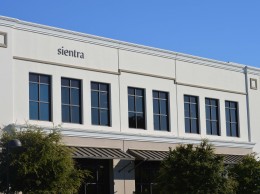Santa Maria Energy’s deal to go public and bring its total funds raised to date to an estimated $90 million caps a flurry of renewed investment and activity in Santa Barbara County’s oil fields, both onshore and offshore.
In addition to 136 wells that Santa Maria Energy has planned, Denver-based Venoco has proposals before regulators for new drilling and reactivation of old fields that could add thousands of barrels a day of production. Bakersfield-based PetroRock is also angling for permits to drill up to 56 new wells southeast of Santa Maria near Garey.
The oil mini-boom shows that, despite what appears to be a de-facto 10,000-ton-per-year carbon cap recently implemented by the Santa Barbara County Board of Supervisors that could dampen energy investment relative to its potential, the dollars are still flowing in from Wall Street and elsewhere.
Here’s a recap of major oil projects moving forward in Santa Barbara County.
Santa Maria Energy
Santa Maria Energy is going public and raising at least $40 million in new capital — and possibly much more — which could put the firm’s total funds raised at an estimated $90 million.
The company’s contentious project to drill 136 new oil wells in North Santa Barbara County received approval from the Santa Barbara County Board of Supervisors last month. The supervisors imposed strict limits on the project’s carbon emissions, essentially implementing a 10,000-ton-per-year cap and requiring the company to buy carbon credits if it goes over that limit.
But the carbon cap does not seem to have deterred investors. On Dec. 4, Hyde Park Acquisition Corp. II announced it would merge with Santa Maria Energy, pumping at least $40 million into the surviving parent firm, Santa Maria Energy Corp., which is expected to trade on the Nasdaq Capital Market.
Hyde Park is a so-called blank check firm. Those firms raise money via an initial public offering and then use the cash to acquire an operating company. Hyde Park has about $79 million in assets on its balance sheet, nearly all of it in the form of Treasuries held in a trust account awaiting investment.
The deal is a complicated series of mergers, but one of its requirements is that at least $40 million will remain in the investment trust account — money that would customarily be available to the new Santa Maria Energy Corp. as operating capital.
In addition to the capital from the going-public merger, Santa Maria Energy also said that it would retain Lazard Frères & Co. to help it raise additional money for project development from the private equity markets in a separate transaction.
It’s difficult to pinpoint an exact overall value for Santa Maria Energy or to say precisely how much capital the money firm has raised because it has not disclosed those figures yet. The company did disclose that Kayne Anderson, a energy-focused private equity firm, holds $50 million in preferred units that will be rolled into the final entity.
For its part, Hyde Park’s largest individual investor is Board Chairman Laurence Levy, a South African-born middle-market leveraged buyout specialist who has current roles in logistics and crane rental companies. Outside investors include hedge fund manager David M. Knott, CNH Partners, TD Asset Management, Fir Tree, Castle Creek Arbitrage and AQR Diversified Arbitrage.
“The board believes the oil resources owned by [Santa Maria Energy] together with its track record as an operator engaged in the development and production of oil and natural gas in Northern Santa Barbara County provide Hyde Park shareholders with an investment opportunity with considerable upside potential,” Hyde Park said in a statement.
In a letter to investors, Santa Maria Energy CEO David Pratt said nothing was expected to change at the firm except that it would become publicly traded – and have more capital.
“We believe access to the public equity markets will not only enable Santa Maria Energy to execute on the next phase of our long term development plan, but will also position the company to take advantage of future opportunities to accelerate our growth,” Pratt said in the letter. “As we continue to expand, we believe that we will be able to significantly increase our cash flow and profitability over time.”
The deal is subject to approval by shareholders of both companies and is expected to close in the second quarter of next year.
Venoco
Venoco has a proposal before the State Lands Commission to reactivate so-called Lease 421, which is produced by two piers near the Sandpiper Golf Course and the Bacara Resort & Spa. If approved, the facility would produce 150 barrels to 500 barrels a day for the first few years of production before settling in at about 50 barrels a day for the remainder of its 20-year production span.
The wells have been idle since 1994, when they were still owned by Mobil and a pipeline problem caused a leak of 170 barrels of oil. Venoco bought them in 1998 and has been working to reactivate them ever since. The site has experienced maintenance problems, including several leaks and a large chunk of one pier falling into the ocean. In the meantime, the city of Goleta went on record as formally opposing the return of production at the sites.
Venoco countered that it had what are known as “vested rights” to produce the wells, and state regulators eventually agreed. The project still needs approval and permits from a variety of state and local regulators before coming online. “When the lease is returned to production, the oil will be transported in the Ellwood Pipeline and delivered to market and refined into fuel and other petroleum products,” Venoco spokeswoman Lisa Rivas told the Business Times in an email.
The company has also revived the so-called Paredon project, which would erect a tower to slant drill wells from onshore. It went before Carpinteria voters in 2010 and was resoundingly rejected.
The new proposal is scaled back, asking for only 20 wells and 9,000 barrels of oil per day. Its application, submitted in June, has been deemed complete by the State Lands Commission, but Carpinteria officials have asked for more information.
PetroRock
Bakersfield-based PetroRock decided to pursue a project just outside of the small farming town of Garey, southeast of Santa Maria. The company put together a 56-well proposal that clocked in at 9,700 tons of carbon, just below the new de-facto limit imposed by county supervisors later in the Santa Maria Energy case.
Because it plans to drill at an existing oil site, PetroRock received what is known as mitigated negative declaration, essentially one of the lowest environmental hurdles a company can face. It has taken nearly three years to secure permits.
“The truth of the matter is it takes so long to get it permitted in Santa Barbara County that we wanted to get them something they could try to approve in a fair amount of time,” President Chuck Dobie told the Business Times last month. “If we drill for all 56 and they’re all good, we may try for expansion in the future.”






 Print
Print Email
Email

















